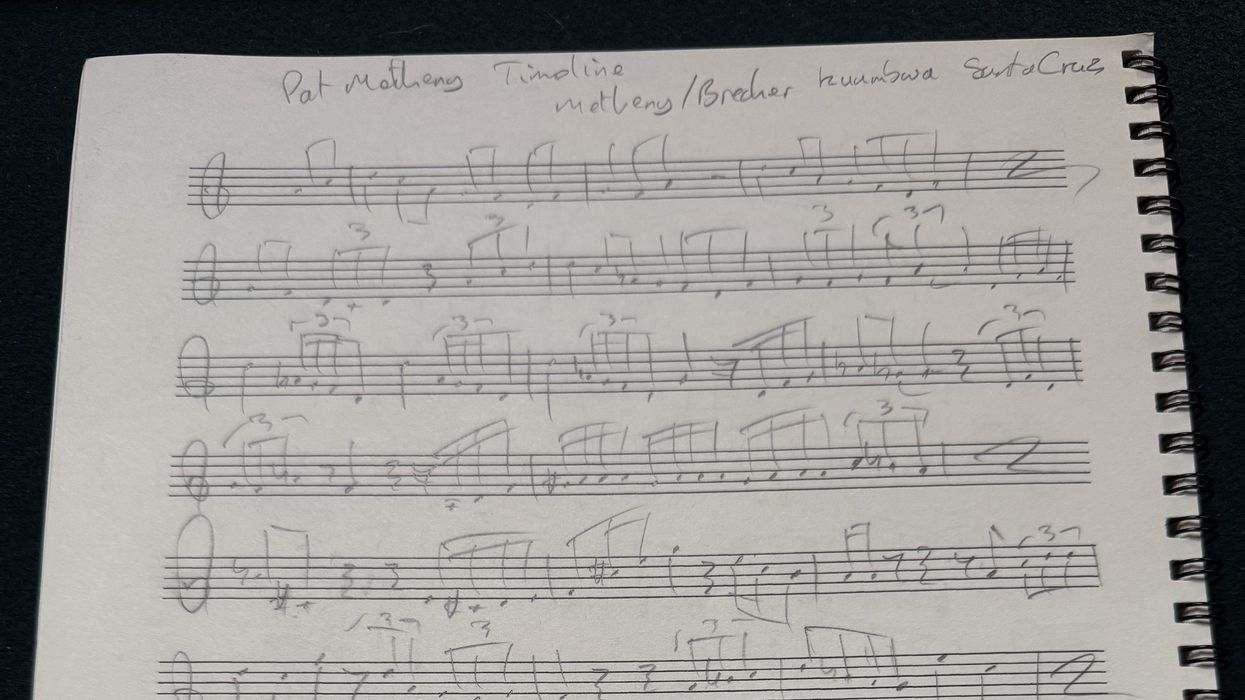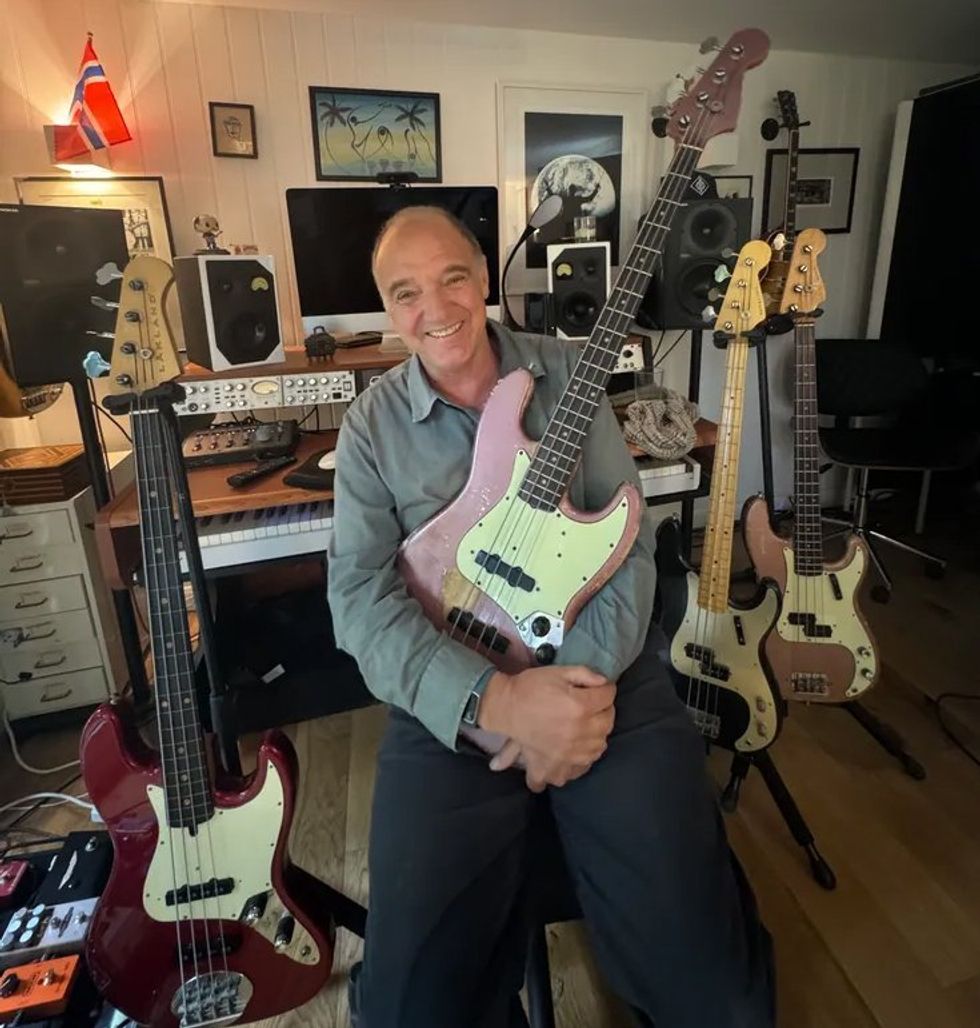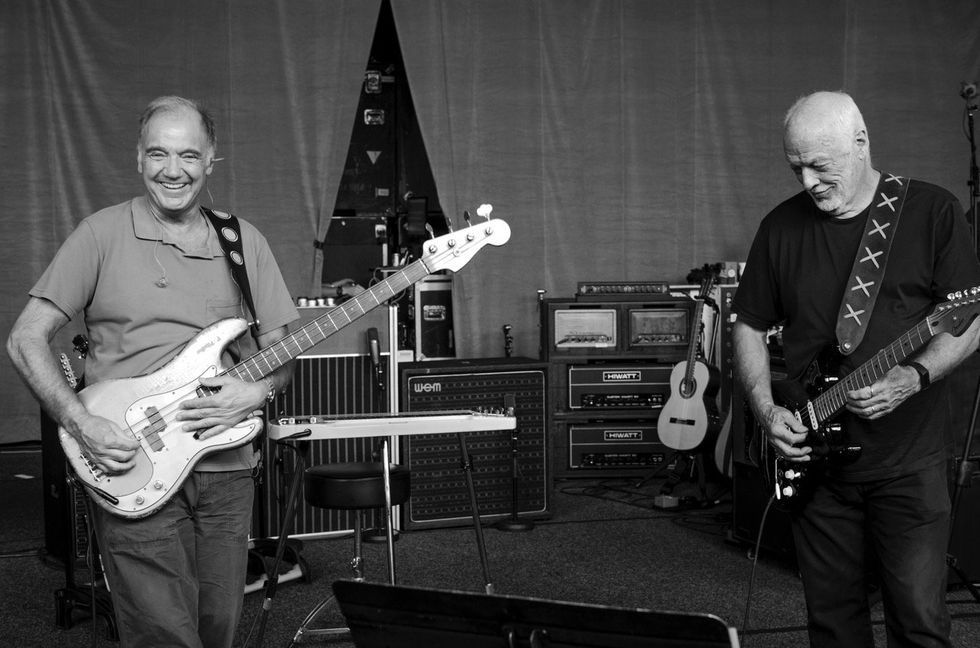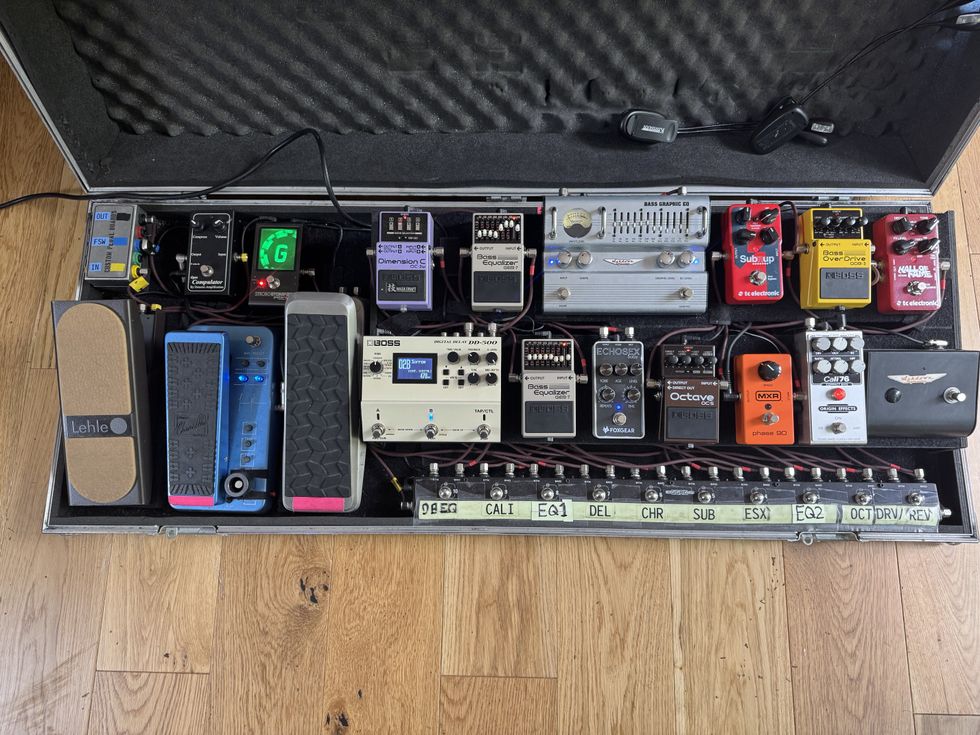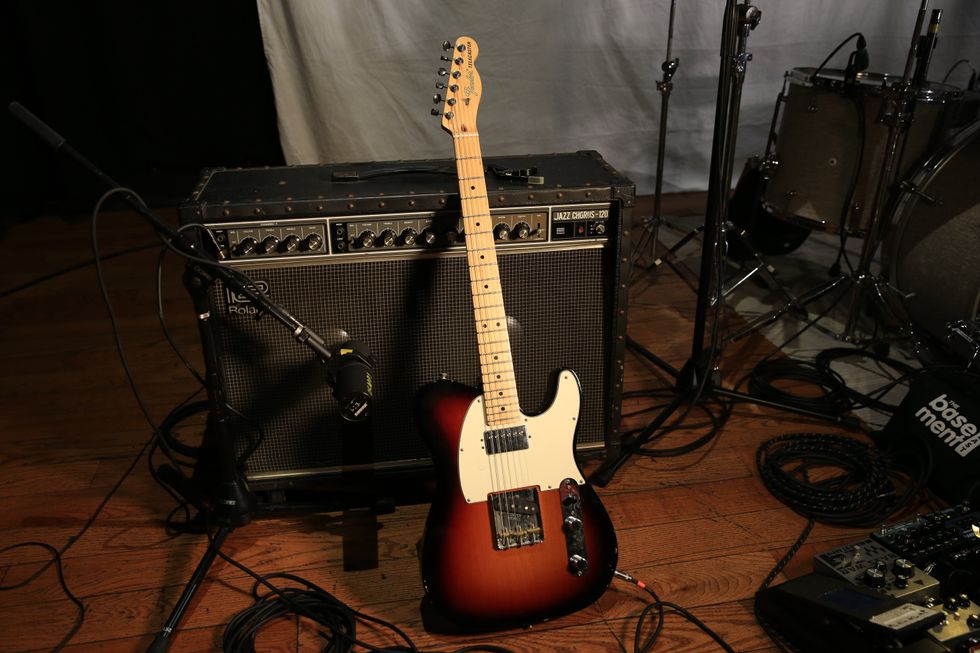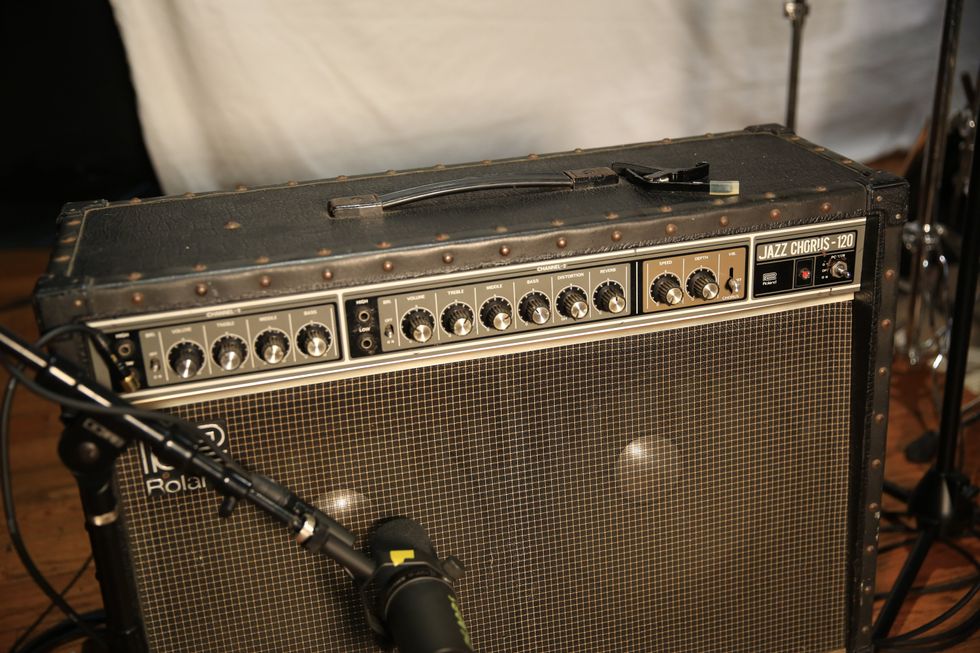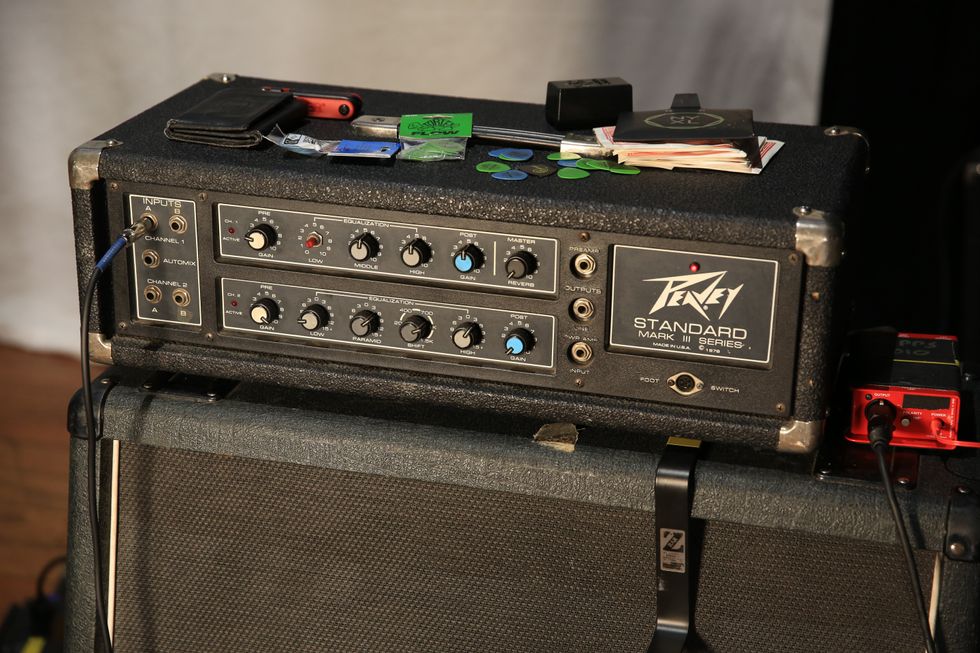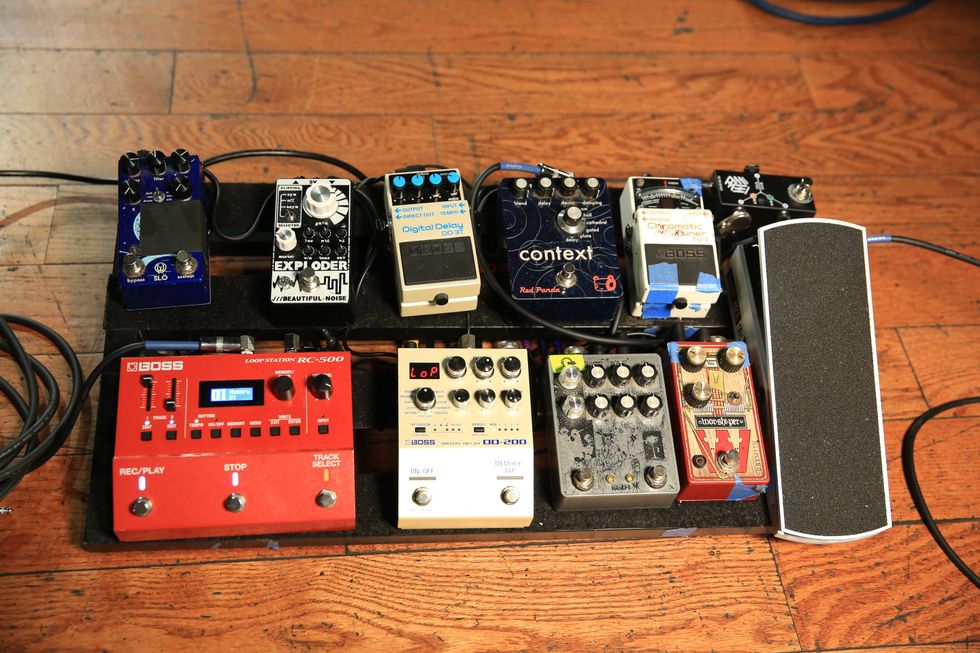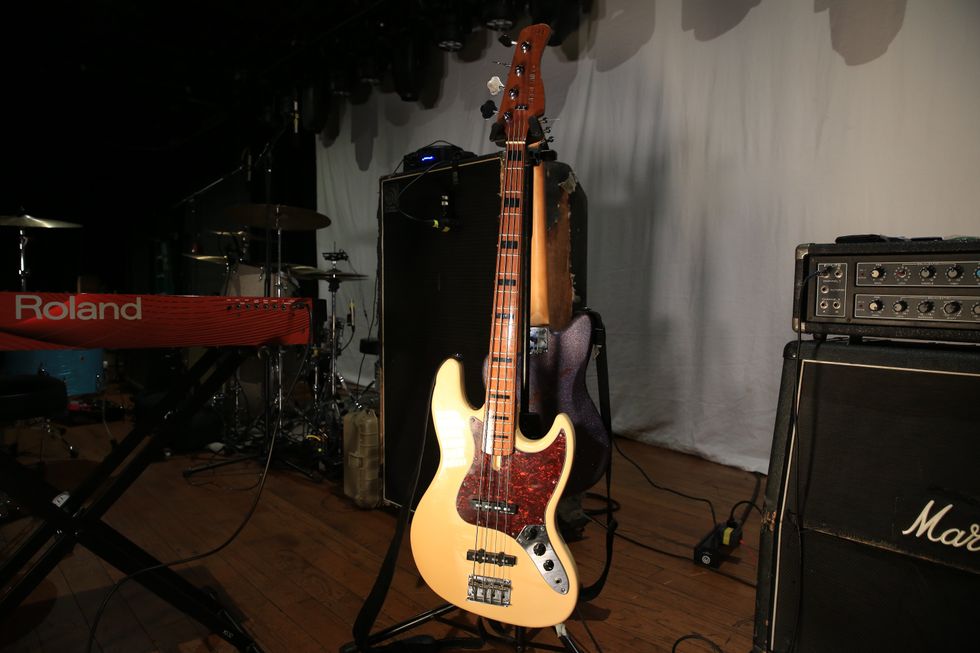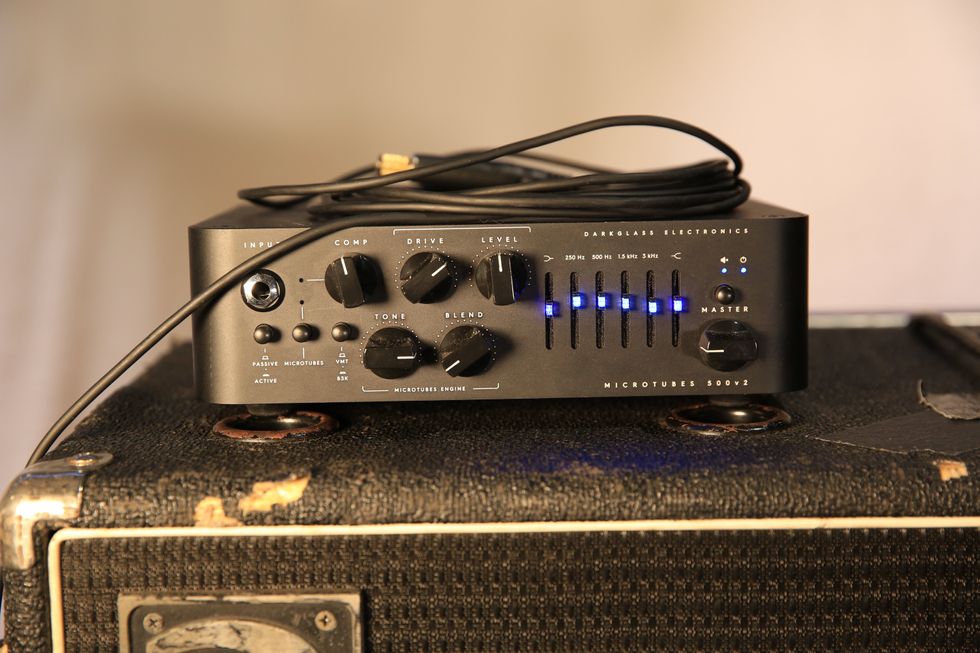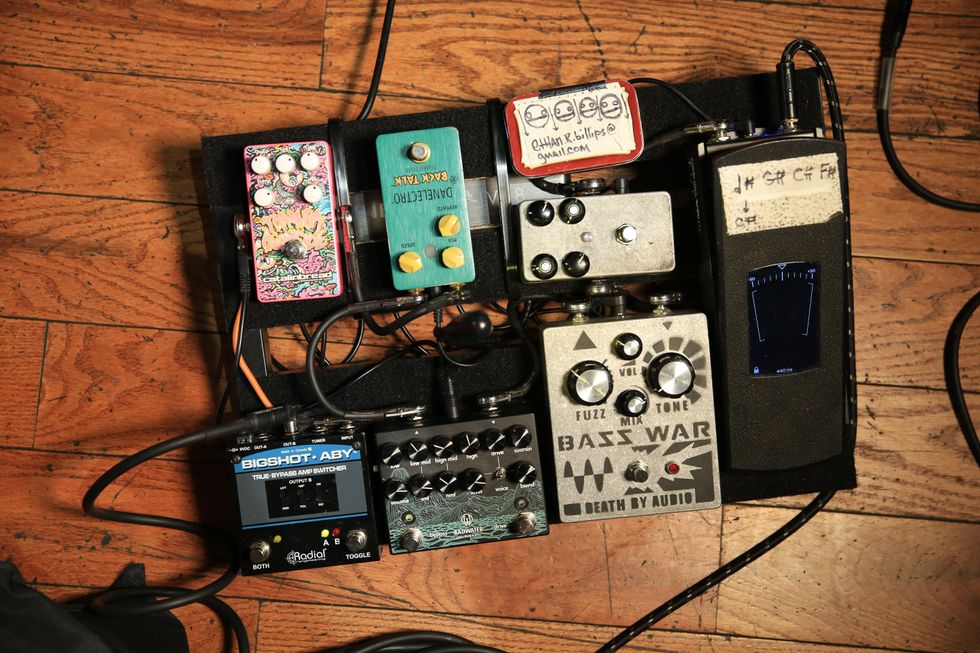*All recorded direct using a PreSonus FireStudio and PreSonus Studio One*
Clip 1 - Active mode, J pickup soloed with treble, mid, and bass slightly boosted.
Clip 2 - Active mode, P and J pickups engaged and balanced evenly. Treble, mid, and bass slightly boosted.
Clip 3 - Passive mode, J pickup soloed with tone knob dimed.
Clip 4 - Passive mode, P pickup soloed with tone knob dimed.
Clip 5 - Passive mode, P and J pickups engaged and balanced evenly with tone knob dimed.
There’s an interesting parallel between Fender purists and Star Wars fans. Both are wildly loyal, quick to point out discrepancies between releases, and ready to devour almost anything (except Jar Jar Binks) that is put on big screens or shelves. Fender has always pushed in new directions, including variations on their mainstay wares. Introduced in 1983 towards the end of the CBS era, the Precision Elite was one such revision. It had a short production life of just a couple years and, yes, there are some who loved it and some who didn’t. But that was a long time ago, so let’s fast-forward to today and the brand-new American Elite Precision—a 21st century incarnation of the P that didn’t leave this bassist wanting for much else.
American Dream
The American Elite arrived in a rock-solid custom case. I’m happy to see companies ramping up their case game because I still don’t like putting my basses in the cargo hold. Flying with this case would make me rest easier, so kudos to Fender for making it part of the package. Once I opened the case, I was hit with a touch of sensory overload from the new-bass smell and my first glance at this tobacco-burst beauty that brims with familiar lines and new features. For the record, four other finishes are also offered.
The 9.4-pound Elite P just looked and felt right from the get-go. It’s comfortable and balanced, the neck pocket super tight, and the satin-finished maple neck was slick and seemed superbly familiar. Unplugged, this bass resonated huge and fat with no rattles.
Complete Elite Treat
I plugged the Elite P into my PreSonus FireStudio Project, opened up Studio One Pro, and started dialing in the controls that consist of four knobs—two single and two stacked—and a mini toggle. The controls might be a little daunting at first if you’re a traditional Precision player, but they’re actually very easy to navigate.
When in passive mode, the volume (first knob), pickup pan control (second knob), and the tone control (outer control on the second stack) are in play. Keeping both the P and J pickups at even strength with the volume all the way up, I dialed the tone knob to about the halfway point and realized the bass tone was being choked. When I rolled the tone knob up all the way, however, this bass started singing. And thanks to the 5-bolt neck and high-mass bridge, there was punch and sustain to spare. The P side was articulate and big, and the jazz side was almost what one would expect—solid and tonally relevant, albeit just a little shy of the full range of Jazz tones. With this P/J configuration, the J is meant to expand the palette, not fully replace a Jazz bass.
Ratings
Pros:
Classic P design and tones with modern upgrades make this a super-versatile instrument.
Cons:
Some might still have visions of the ’80s Elite stuck in their heads. Shame on them.
Tones:
Playability:
Build/Design:
Value:
Street:
$1,799
Fender American Elite Precision
fender.com
The American Elite’s neck has a nut width of 1.625" and it feels refined, not bulky. It’s a compoundneck that graduates from a C shape at the bone nut to a more modern D shape at the 12th fret. And that’s a feature I didn’t think I needed until I played it. Having slightly more mass in the money section of the bass gives a very solid foundation. The design also makes the higher notes easily accessible. Combine this with the Elite P’s satin finish and well-dressed frets, and you have a neck that’s a dream to play.
The Elite quickly jumped to a new level when I switched the mini-toggle to active mode. When going active, the first stacked control comes to life, with the top dial controlling the treble and the outer ring governing the bass. Both offer 18 dB of boost or cut. The midrange control (top knob on the second stack) offers 12 dB of boost or cut.
The tones that pop from the American Elite in active mode are wide-ranging and will appeal to a mighty broad cross-section of players. With only the split pickups engaged, the tones are more articulate and pointed, and, by simple adjustments with the 3-band EQ, I was able to get sounds from mid-scoop slap-happy to bold and thunderous. I got to a sweet, solo-bass tone by engaging just the bridge pickup, and with a bit of bass EQ boost, found that the pickup could stand on its own all night. Great as each pickup sounded on its own, my personal sweet spot on the American Elite was achieved by blending both pickups and favoring the neck pickup just a touch more. This setting gave me everything I needed for solid rock tone, but it was comforting to know the bass had a lot more to offer.
The Verdict
From a one-bass-fits-all perspective, the American Elite Precision has it. Fender has managed to capture the essence of a classic P, add a pinch of Jazz, and blend them together with the tonal prowess of a high-end custom instrument. Yes, plenty of basses are marketed as built for all styles of music, but the American Elite Precision can truly back this claim. From jazz to funk to rock to death metal, this bass will carry the load. The satin-finished, graduated neck feels oh-so-nice, and Fender’s noiseless pickups sound fantastic. The price will seem hefty to some, but since this bass is capable of replacing several in your arsenal … well, do the math. This is a solid, classic bass you could call home for years to come.
Watch the Review Demo:



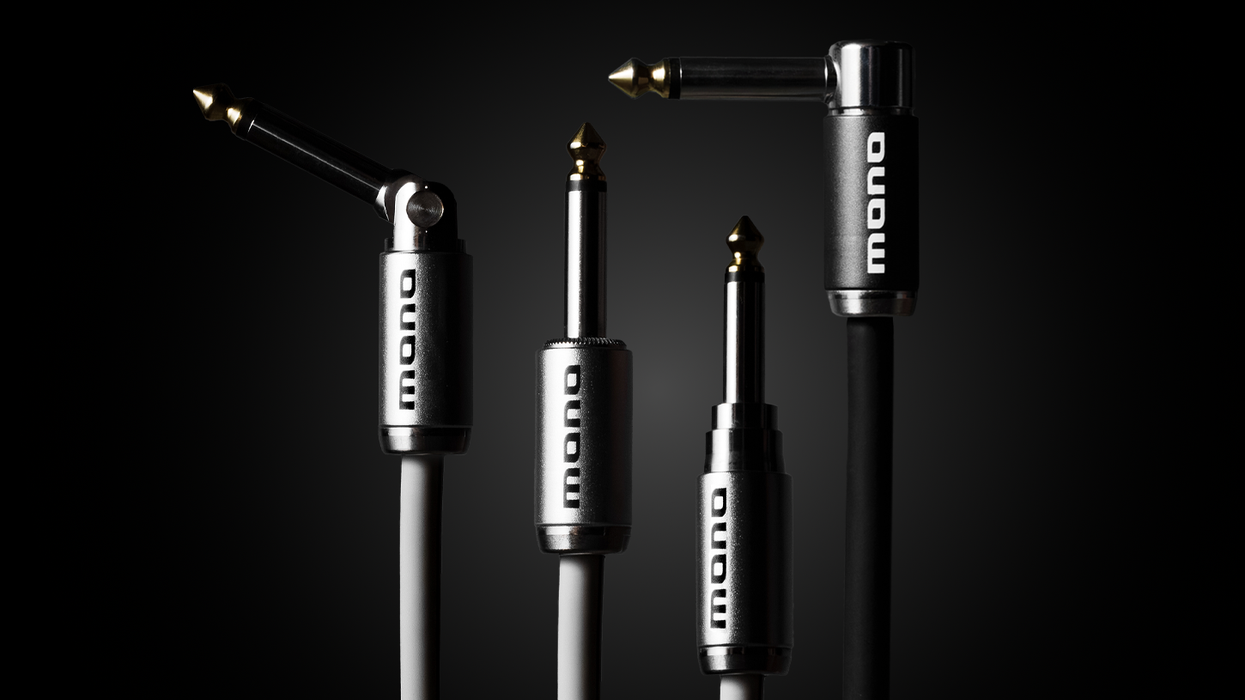


![Rig Rundown: AFI [2025]](https://www.premierguitar.com/media-library/youtube.jpg?id=62064741&width=1245&height=700&quality=70&coordinates=0%2C0%2C0%2C0)












 Shop Scott's Rig
Shop Scott's Rig





